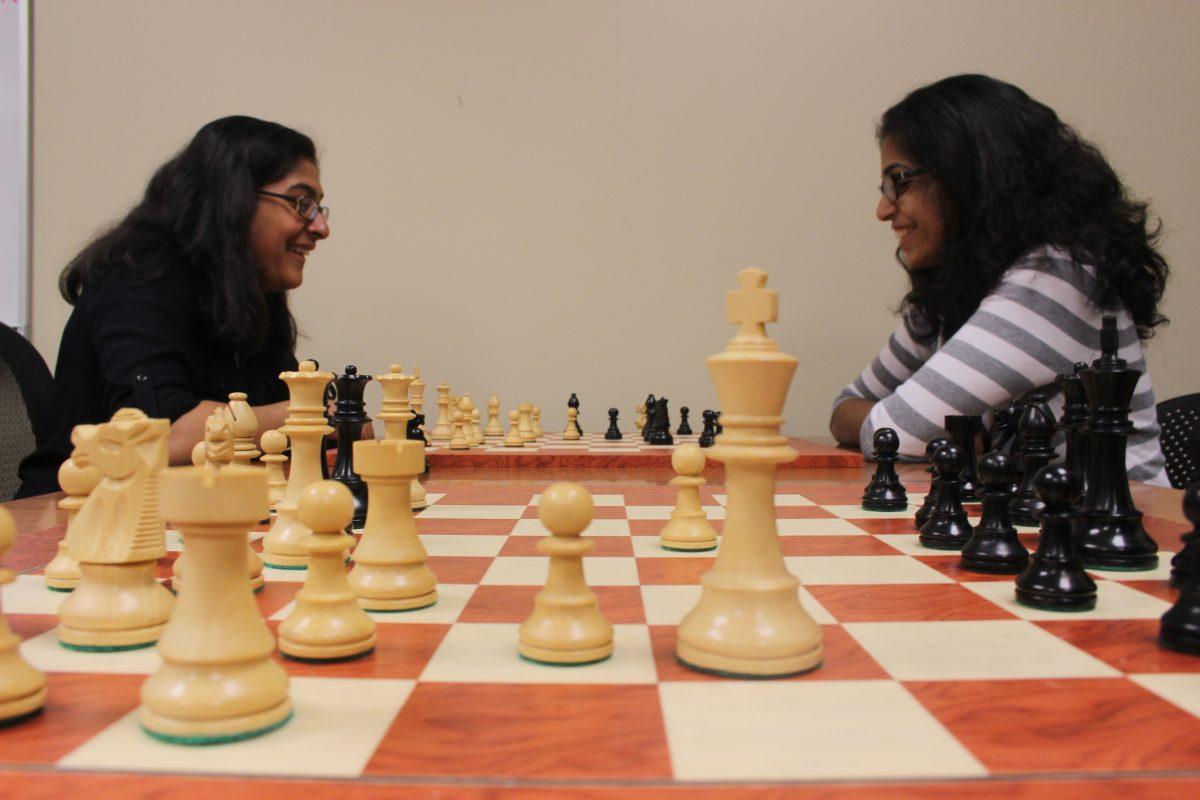Coach Rade Milovanovic started working with the UTD Chess team in 1999, when there were only two players on the team carrying the highest title competitive chess has to offer — Grandmaster. Now, 18 years later, there are triple that number on the team as the program grows and increasingly emphasizes female involvement.
UTD’s successful chess program began with school-sponsored scholarships. After the University of Maryland Baltimore County, UTD was the second school in the nation to recruit players with the promise of university-funded scholarships. These scholarships are divided into three tiers based on the skill level of the player, and only the bottom tier fails to fully cover tuition for the two to four years a player would study at UTD.
“From the 90s to 2008 or 2009, there were really only two teams, us and UMBC, who gave scholarships. After that, we started getting competition from many schools like UT Rio Grande, Texas Tech and Webster University,” he said. “It’s not easy when these schools are often trying to recruit the same players we want.”
Since 2004, UTD has hosted a tournament for high level players called the UTD Open as another way to scout for potential players. While the chess tournament takes place, students who are thinking about joining UTD’s chess program can take a look at the campus and decide if the school is right for them.
“I think chess is progressing, you know? Thanks to all the computers and softwares and such, the level is getting higher and higher,” he said. “Again the problem is that we have more and more competition, so we need to do more, like this tournament.”
Although the UTD Chess Team has maintained a women’s division for several years, Alekhya Nandula, a finance and computer science junior, said the program recently began efforts to bring in more top female talent.
Milovanovic said he sees more girls playing than ever before, but they seem to dwindle at the collegiate level. The increased participation at younger ages doesn’t seem to correlate with the number of female players at higher levels.
“In our chess camps, we see many, many girls, a lot of girls. But the question becomes where do they go afterwards? Do they drop out (of playing)?” Milovanovic said.
To Milovanovic, this has become a global problem because, at the top level, there are overwhelmingly more males than females. When the UTD Chess team first started sending a women’s team to the Pan-American Chess Championship there were only enough members for one team. In some cases, like this year, there wasn’t even enough for a full team.
“That’s why we are trying to recruit more girls and send more female teams to tournaments,” he said. “We are thinking about more and more ways to make our program more attractive to girls.”
One of the top female players on the team is Mariam Danelia, a finance junior and a Women’s International Master. Her title is one tier below Grandmaster, and it qualifies her for the highest scholarship UTD has to offer — the Chess I scholarship. She was recruited as a result of winning the European Junior Chess Championship for girls under 18.
“Mariam’s recruitment was a bit different,” Milovanovic said. “We used what we refer to as a tournament-based scholarship. A representative or Mr. Stallings, our director, would have gone to meet her in Europe to offer the scholarship. We do this so players can have a year to think about it and of course we want to beat the competition.”
The increase in talent for the Chess Team, either from Danelia or the six Grandmasters, benefits all the members of the team.
“When I first started, there definitely weren’t as many Grandmasters or anything, but now they’re everywhere,” Nandula said. “Sometimes, I feel a little intimidated because I know that I can never, ever be as good as these guys, but it’s really helpful to have them around for support and insight.”
Managing school as well as chess is difficult, but being surrounded by strong players makes it easer to study, learn and improve, Milovanovic said. Suhasini Sundar, an informational technologies and systems junior, agreed that her ability to focus and improve on both of those things was her biggest challenge.
“For me, I would definitely say my biggest issue was that my dad kept pushing me to do my best at school,” she said. “He really wanted me tofocus on my grades and get a good education for myself, so I found it hard to balance that with my passion for chess.”
Sundar finds it helpful to learn from the various grandmasters that lecture every Friday for the Chess Society, a club that is for students who want to play chess in a more casual setting. These grandmasters lecture on a demo board and explain to the students the theory and tactics of a given position.
“They’ll come at the very beginning of Chess Society and you get to learn from their lectures. After that, you just have free play where you can play with other members,” she said.
The Chess Society is only one component of the program’s greater goals, Milovanovic said.
“I think the main goal is to expand. It’s not only about the team — we have more aspects,” he said. “It’s not just the competition. We do chess education and chess camps during the summer. Our goal is to spread chess throughout the community with our players to popularize it as much as we can.”







